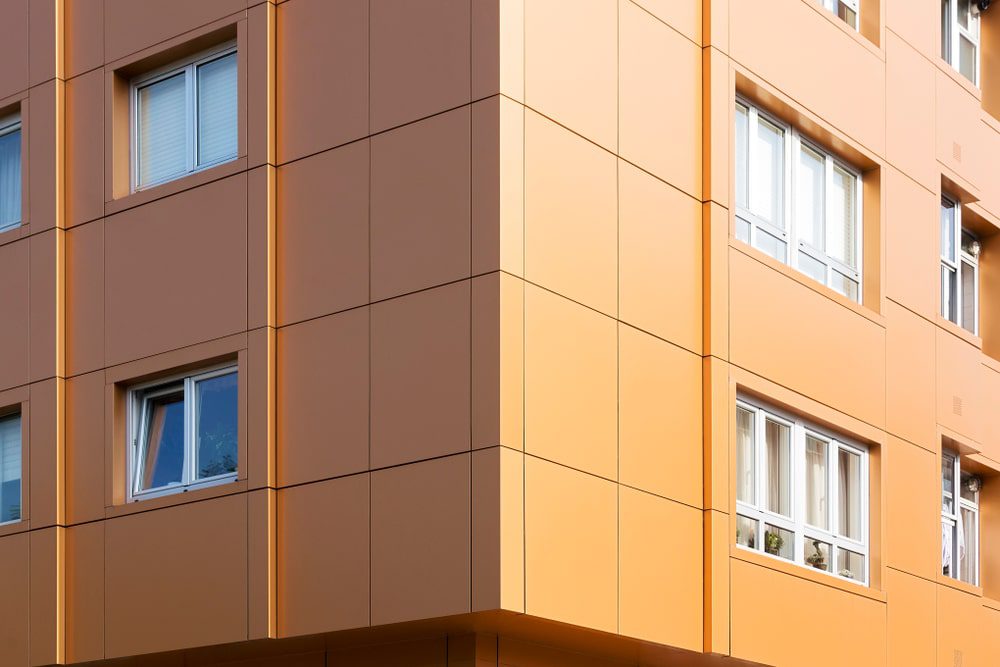With ever-changing Building Regulations demanding lower U-Values, energy efficient aluminium panels combined with high-performance glass and insulated aluminium profiles can create energy efficient buildings. Light, strong, cost-effective and in a range of colours, aluminium panels align with modern building designs whilst having some of the best U-Values. Aluminium panels significantly promote energy efficiency, particularly when applied to windows, doors, curtain walling, and cladding.
Typical U-Values of energy efficient aluminium panels
When used as part of an overall window or door calculation, our panels range at various thicknesses will help achieve the requirements of Part L Building Regulations 2022.
As standalone panels, the U-Values available depend on many factors, one of the most important being the overall panel thickness and the insulation used. As a general guide, with aluminium sheet thickness of 0.6mm to 3mm maximum and using standard foam, polyisocyanurate, mineral fibre, and Styrofoam with or without timber core, the U-Value of insulation ranges from 0.025 to 1.25 wm2K. This ultra-low U-Value is excellent for commercial screens in combination with high specification glass units, helping create an excellent whole product rating.
Aluminium Panels in Windows and Doors
Typically, windows and doors today must be the insulted type. Thermally insulated aluminium, timber, alu-clad or all-wood windows are today excellent products with good window energy ratings. Depending on the design, energy efficient aluminium panels can help make the ratings even better when used in ribbon windows, dividing walls or anywhere where the internal building elements need to be hidden.
Thanks to their variety of insulation materials, aluminium panels dramatically improve the thermal performance of windows and doors. The insulated core reduces heat transfer, while the aluminium exterior provides strength, weather resistance, and a sleek, modern aesthetic. So panels can help in building specifications and help reduce energy bills.
Curtain Walling
Curtain walling systems are today widely used in buildings because of their fast installation, pleasing design and flexible colour and configuration options. Aluminium panels are already widely used in curtain walling to hide inner floor slabs, elements of the building structure. Just like windows and doors, energy efficient aluminium panels make a significant difference and more so because they can come substantially thicker than the types you get with windows and doors. It is possible to create a deeper tray lining the panel up with the inside of the curtain walling mullion or transom.
Cladding with energy efficient aluminium panels
When it comes to cladding, aluminium insulated panels can also play an important role because of their very low U-Values combined with its attractive price point. Their thermal insulation properties minimise heat transfer, just as with windows, doors, and curtain walling. This thick insulation can help heat or cool a building, dramatically reducing the need for artificial heating and cooling and saving money on energy.
Suppliers of aluminium insulated panels – contact us today
As the construction industry moves towards more sustainable practices, the role of aluminium insulated panels is set to grow. Their superior thermal performance, flexibility, and aesthetic appeal make them an ideal choice for energy-efficient construction. Contact us for prices, lead times and colours on our range of aluminium insulated panels.

